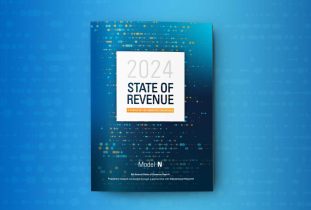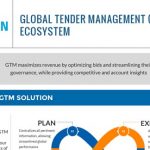It seems as though pharma has been hearing the same message from every perspective: drugs are too expensive. Whether stemming from policymakers or the media, the message has been acknowledged across the industry. In response, pharma manufacturers and payers have shifted the focus to value through outcomes-based contracting (OBC).
Value over Price
Though this form of contracting is still in its infancy—and thus a vague definition exists—it’s viewed as a natural progression in the move toward value. Moreover, from now through 2021, industry experts project that there will be an average of 45 new drugs launched per year, with particular emphasis into specialty treatment areas like oncology and autoimmune diseases with narrower indications that target a smaller patient population. With this in mind, manufacturers will most likely price these drugs to reflect higher R&D costs and the unmet clinical need.
By moving away from traditional models of paying based on quantity purchased and instead paying based on outcomes, manufacturers, payers, and patients can all benefit; patients experience increased access to drugs, manufacturers’ products appear on more formularies, and payers minimize their financial risk. From a competitive advantage, manufacturers enter into a more predictable investment, as the drugs are developed for a specific population.
With particularly expensive treatments—especially in regards to certain cancer drugs—OBC gives patients an opportunity to immediately try drugs that fit their specific needs. The example recently discussed in the media is the Novartis and CMS agreement for the childhood leukemia drug, Kymriah, priced at approximately $475,000 for a one-time treatment, though a cost-effectiveness assessment found that a price between $600,000 and $800,000 would have been warranted. If patients do not respond to the treatment within one month, the gene therapy will not be reimbursed.
The agreement has sparked debate, with many balking at the treatment’s price, regardless of impressive clinical results of 83% remission in patients. OBC may be the solution that reestablishes value’s prominence over price, while also potentially helping to mitigate pharma’s negative reputation.
Navigating Contract Challenges
While OBC’s are a good idea in theory, manufacturers face a myriad of challenges before engaging in such a contract. Initially, manufacturers must determine whether a drug is a suitable candidate for an OBC. For example, the drug should have an agreed-upon measure within a period of time. Drugs prescribed for pain management can be especially difficult to measure its result, as pain tolerance varies between individuals. Typically, an OBC is most effective if the outcome is something palpable, like a reduction in hospital readmissions.
Clinical trials also contribute complications to the process. While manufacturers spend countless resources to research, develop, and support a product throughout the FDA approval process, the clinical trial results depict a highly controlled patient demographic. A drug’s performance in the real world is therefore difficult to forecast, given trial limitations. Patients may react differently to the same drug as well, leading to further complications in the contract process.
Additionally, in order for OBC’s to come to fruition, manufacturers must closely collaborate with payers and providers, of which there still remains hesitancy between parties. While both participants in the contract want to succeed, little trust for pharmaceutical companies seemingly exists.
Manufacturers are therefore tasked with convincing payers that the controlled clinical trial results will mirror those in the real world and that they have complete confidence of their drug’s performance. Moreover, many companies are still in the gathering stages of outcomes-based contracting as they consider specific drugs to include along with the right payer to enter into a contract with.
On the payer side, they become responsible for tracking the patient’s progression, though for this to work, hospitals and health systems must give them access to the electronic health record (EHR). Many payers don’t have access to EHRs, given privacy concerns.
When considering the current challenges of an OBC, it’s no surprise that over 70% of attendees polled at a recent OBC conference believe that this form of contracting is not a widespread solution and expect traditional methods will continue to dominate the market over the next three to five years.
Model N Can Help
As your company continues to navigate OBC territory, Model N can work with you to ensure only the appropriate drugs receive the discount while supporting the evaluation period as defined the contract. Considering the tailored aspect of these contracts, Model N can support a variety of scenarios. For example, complexities arise in OBC discount structures covering a single drug projected to resolve the medical condition yet the patient requires a second dosage. An additional higher discount rate is paid on that refill, prompting the payer to identify the specific drug lines by denoting it on the NCPDP transaction. Model N filter values can therefore be set to identify the value and ensure that only those drugs are paid the higher discount.
Additionally, as many OBCs measure an improved outcome in the patient, the payer is required to calculate those results within a defined evaluation period and report that information back to the manufacturer. To that end, the manufacturer can setup discount structures for correct calculation and payment for plans that have achieved the desired outcomes.
As more manufacturers and payers enter into OBC agreements and more data is shared, we look forward to learning alongside you so that we can fully support you to maximize revenue across the supply chain.
Contact Model N to find out how our strategy designer can help you build outcomes-based contracts.
Sources: Industry conference research, IQVIA, Forbes
















